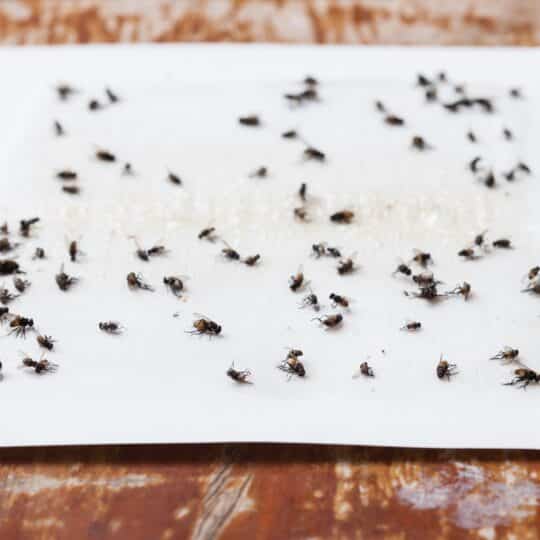Where to Put Insect Sticky Traps

One potential insecticide-free option for pest control is using sticky traps around your home. Sticky traps are a lightweight card that has an adhesive layer over it. Although not as strong as glue traps for rodents, the sticky material is great for trapping gnats, cockroaches, spiders, beetles, and other common household insects.
Part of the effectiveness of sticky traps relies on having them in the right location for the pest that you want to trap. If you are looking to use sticky traps to help manage or get rid of pests in your home. take into account these considerations.
How to Implement Sticky Traps for Your Pest Prevention Strategy
There are sticky traps for flying and crawling insects. The traps for flying insects, typically mounted on stakes or strings, are more generally used to track pest populations in agricultural settings to determine if additional pest control methods are necessary. This is due to the fact that if you have bugs flying around your home, there is a limited chance of them flying into a sticky trap.
However, sticky traps can be effective against crawling insects like roaches and spiders because these insects will inadvertently crawl across the trap and become stuck on it. For this to work best, you want to place your sticky traps in the following ways:
- In Enclosed Spaces – Sticky traps generally are not effective for removing pests from your yard since pest populations are constantly changing in a larger space. The exceptions here are that you can use sticky traps to track bug activity in a garden, help protect potted plants by placing sticky traps in them, and place sticky traps near entry points, such as by exterior doors, since these are the most at risk places for bugs to get into your home.
- At the Base of Walls – Most pests will stick to out of the way areas as they travel around your home, most often crawling alongside walls. You should place your sticky traps adjacent to walls to capture the most pests and also to keep the traps out of your way. If you are using a trap that is covered with openings on either end, place the trap parallel to the wall so that both ends are accessible.
- Behind Appliances – The area behind appliances and cabinets is a frequent spot for bugs because they are well sheltered. Placing the traps behind these areas will help eliminate any bugs that are active there.
- By Exterior Doors and Windows – Doors and windows are a weak point through which pests can get inside. Placing sticky traps on either side of doors and windows means that fewer pests can get in.
- Attics, Garages, and Basements – Places like attics, garages, and basements are hotspots for pests since they can remain largely undisturbed there. Sticky traps are a good hands off way to manage pest activity in places where you do not often go.
When putting sticky cards in any of these places to trap insects, you will want to use approximately one card every 5 to 10 feet in order for them to be numerous enough to catch bugs. You also want to check them with relative frequency to replace them either when they are getting full, or when the stickiness has started to fade.
While sticky traps can be a convenient and low maintenance method of managing pests, they may have limited effectiveness. They are relatively a slow working method since you have to wait for pests to come to them and getting the placement right is absolutely essential. This is part of what makes them better for preventing and monitoring pests than for dealing with an active infestation.
If you currently have a pest infestation, more proactive action with a local pest control company will generally be faster and more effective. ExtermPRO is a pest control company in Gainesville, Virginia serving all of the surrounding communities. We provide extermination and preventative pest control to both remove and prevent pests. If you are searching for a fast and reliable solution to get rid of bugs, give us a call for a free quote.